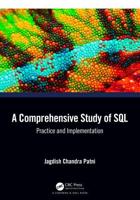Publisher's Synopsis
In a world grappling with cybersecurity and data privacy, understanding the history of secure communications is more crucial than ever. John C. Hartfield's 'Lisbonian' Selection of Roots and Terminals offers a fascinating glimpse into the intricate world of telegraph codes, a vital tool for confidential communication in the early 20th century. This document delves into the meticulous construction of a code language, featuring 21,323 five-letter words, which translates to an astounding 454,670,329 ten-letter words designed for secure and efficient transmission via telegraph. Hartfield's work directly addresses the challenges and debates surrounding the Lisbon Telegraph Conference of 1908, which sought to regulate the use of artificial words in telegraphic communication. This document provides unique insights into the methodologies employed by Hartfield, including his ingenious "Detectors," which allowed users to decipher and correct errors in transmission. It also features fascinating testimonials from prominent companies like Dalgety & Company, Ltd., highlighting the effectiveness and reliability of Hartfield's code system in real-world scenarios. "John C. Hartfield's 'Lisbonian' Selection of Roots and Terminals" is a must-read for researchers of communications history, cryptography enthusiasts, and anyone intrigued by the ingenuity of secure communication in a bygone era. It will transport you to a time when the tap-tap-tap of Morse code carried the world's secrets, offering a captivating blend of historical context, technical ingenuity, and linguistic artistry.
Facsimile edition of version released by National Security Agency. This edition published on June 11, 2024, the 126th anniversary of the Lisbon Conference.
This annotated edition illustrates the capabilities of the AI Lab for Book-Lovers to add context and ease-of-use to manuscripts. It includes several types of abstracts, building from simplest to more complex; essays to increase viewpoint diversity; and page-by-page analysis.









